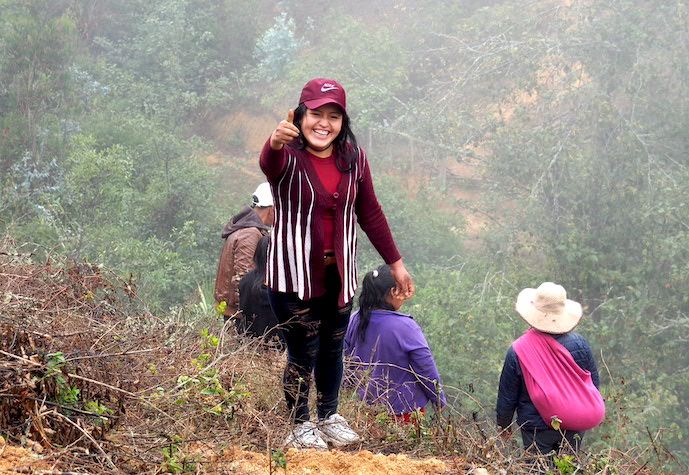In Peru, more than one million hectares of forest have disappeared in 15 years. In this country, that contains 13% of the Amazonian Forest, trees are essential to the health of unique tropical ecosystems, to the survival of a rare and often threatened biodiversity but also to the subsistence of millions of Peruvians, farmers and inhabitants of rural areas. To reduce the impact of deforestation, Reforest'Action is supporting three projects dedicated to the restoration and protection of forest ecosystems on the field.

Tarapoto: Reforest’Action's first tropical project
First stop: Tarapoto. Being our first project implemented in a tropical zone, this agroforestry project, located in the heart of the Peruvian Amazonian Forest, holds a very special place to us. Started in 2015, it has been monitored and accompanied on site by the Urku Center.
Tarapoto is an urban area of 320,000 inhabitants situated in the San Martin region. Located at an altitude of 356 meters, it is surrounded by low and high forests.
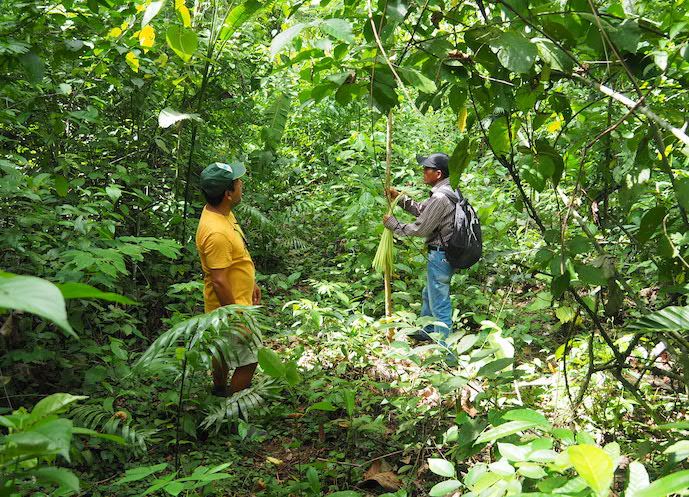
Since trees were planted, time has passed, and the reforested plots now look more like forests than plantations. “Fruit, fast-growing and high-growing species have been planted over the years", explains Annette Butty, in charge of Reforest’Action’s forestry projects in South America. Today, these forests are extremely mixed. Even medicinal plants with multiple virtues grow there, which allow the plots’ owners to generate additional income”.
Two of the project's beneficiaries have decided to go one step further by creating agro-ecotourism farms around the project. "These are green tourism centers in which visitors can discover the variety of species that grow there, the beehives, but also the variety of products from the forest, their transformation and marketing processes," explains Annette.

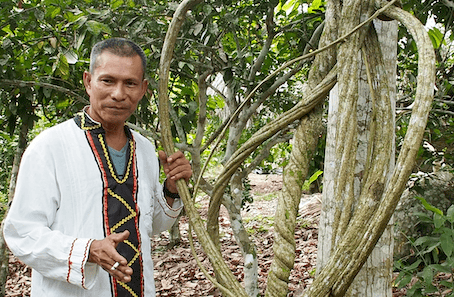
Heriberto is one of them and explains the benefits generated by the project: "_On the plots, everything is produced in a completely natural and organic way. Most of the species we grow here are ancestral and endemic to the region. Unfortunately, many of them are at risk of extinction. Through the project, we want to make their existence known to as many people as possible thanks to the educational activities organised and the marketing of the products made out of them_”.
We leave Tarapoto, happy we could witness a concrete example of a socio-economic model built on nature-based soutions... A model that allows its beneficiaries to live self-sufficiently, without depending on the variable and often low prices of coffee and cocoa that are mainly produced in Peru.
Lamas: some encouraging outcomes for a still recent project
Lamas, a province of more than 80,000 inhabitants, located 23 kilometres north of Tarapoto, is our second stop.
On the outskirts of this municipality, in the middle of the Amazonian Forest, this vast agroforestry and reforestation project on degraded ecosystems has been underway since 2021, in partnership with the Centre for Innovation and Management for Sustainable Development (CIGDES).

On the plots concerned, productive and leguminous species are introduced to encourage the establishment of agroecosystems, restore degraded agricultural plots or pastures, but also help 240 beneficiaries adopt sustainable forestry practices in line with current environmental challenges.
On the ground, the main nursery was set up in September 2021. During our visit, we take part in the restoration of a demonstration plot by local community members. “We are only at the very beginning of the project, but we can already see its positive impacts on the population, observes Annette. _Setting up the nurseries, monitoring and plantings are sources of income for the members of the technical team who carry them out_”.
As for the beneficiaries, the project seems to nourish their hope of seeing their living conditions improve: soon, the latex produced by the rubber tree, the white cocoa produced by the majambo and the fruits derived from the Mayan walnut tree will be harvested and marketed, a way to increase their income on a regular basis.
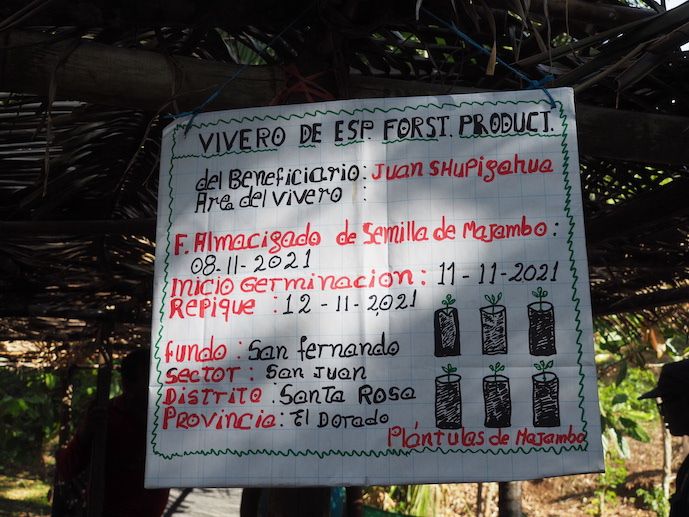
Piura: a project driven by a collective spirit
The tour of Peruvian projects ends in a cold, foggy weather, 2500 meters above sea level. On that day, we reach the project’s plots, located around the city of Piura, capital of the Piura region, north of the country.
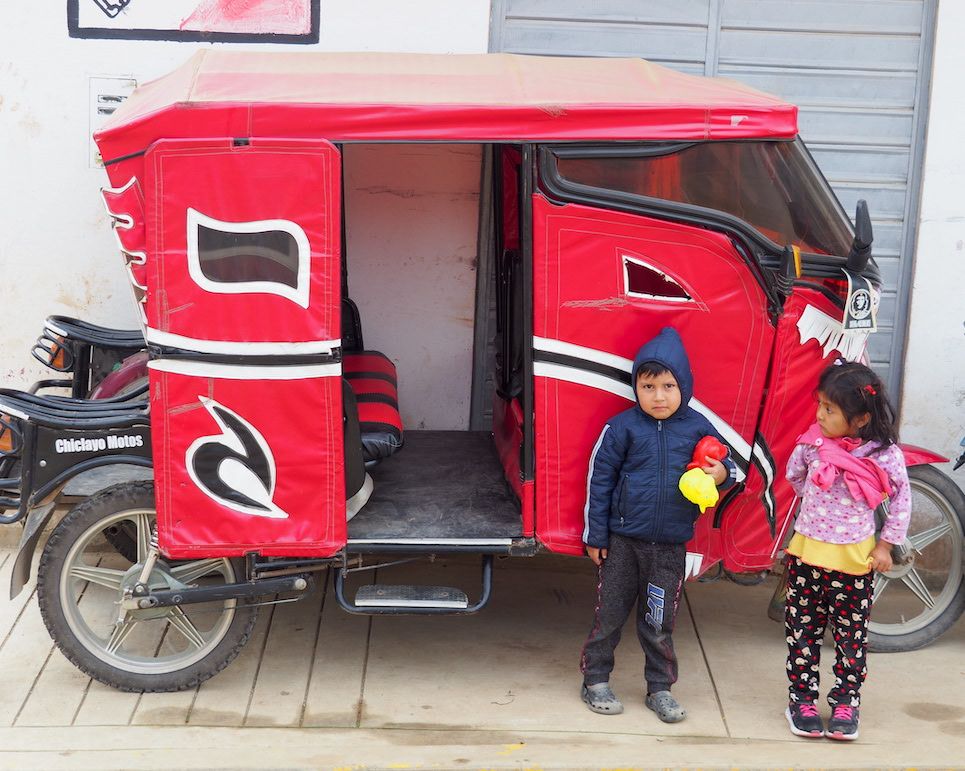
Started in 2019, in partnership with the Peruvian NGO Progreso, the Piura project aims at restoring degraded soils, introducing agroecosystems and limit desertification in the mountain in order to promote biodiversity.
In addition to the restoration of private parcels, the project includes community plots, where local community members gather to carry out planting actions. This collective movement reminds us of the importance of the social aspect of reforestation on communal land:
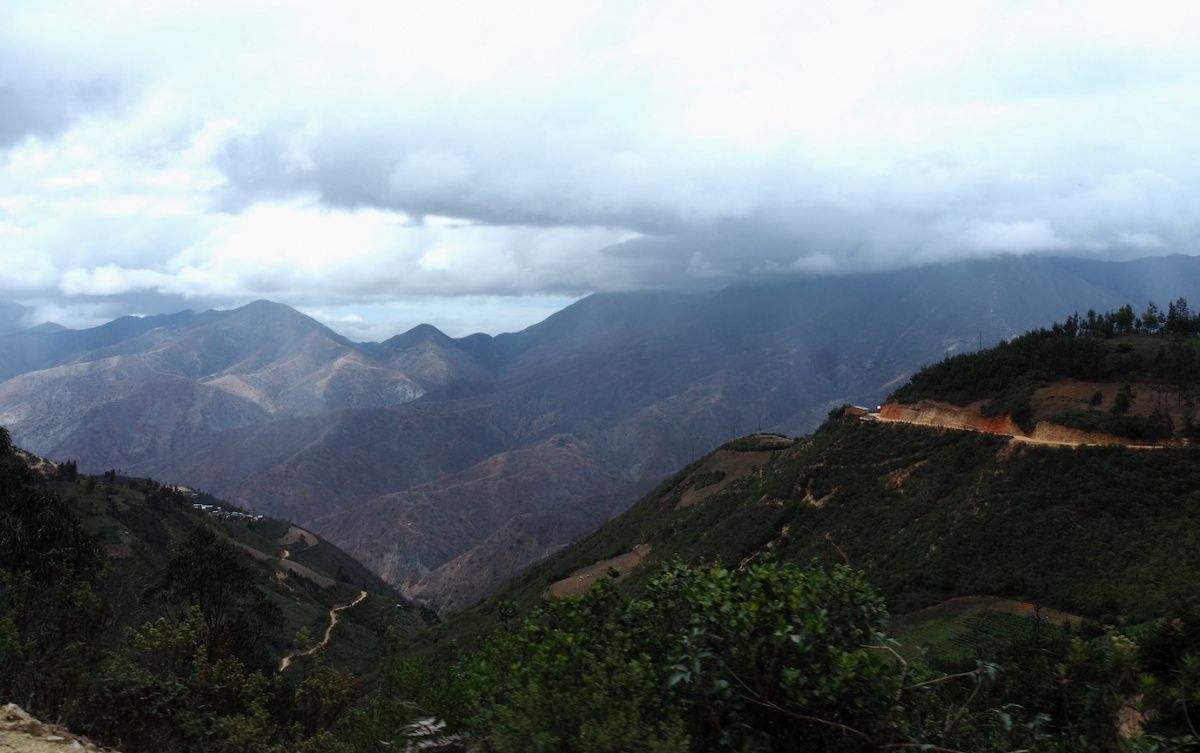

"This approach could not be implemented if we did not take an interest in the community as a whole," observes Annette. _Here, in 2 years, we have already planted 1 million trees thanks to the community’s collective effort. It is because the projects create links between people of all ages, for the long-term benefit of the greatest number, that it all works_”.
A meeting between the projects' beneficiaries as a final point to our trip
At the very end of our trip, we participate to an event organized by Reforest’Action that spans over the sharing of experience between our partners and the projects’ beneficiaries.
On that day, an earthquake that damaged the road network in the north of the country prevented some of the participants to get there. Despite this, discussions are going well, raising the necessity to follow-up and monitor each of the projects initiated in Peru, as explained by Annette: "_This kind of events gives beneficiaries a voice and allows us to learn from their know-how and experience. It reminds us of the importance of encouraging dialogue between different stakeholders. It allows us to take a long-term view, well beyond the planting phases. Today, time has come for knowledge sharing and inter-community training. We must continue to put all our energy into increasing people's forest knowledge, so that they can make the most of the projects implemented_”.
This conclusion is a reminder of the importance of collective action as well as the need to make local communities agents of forest ecosystem restoration.
